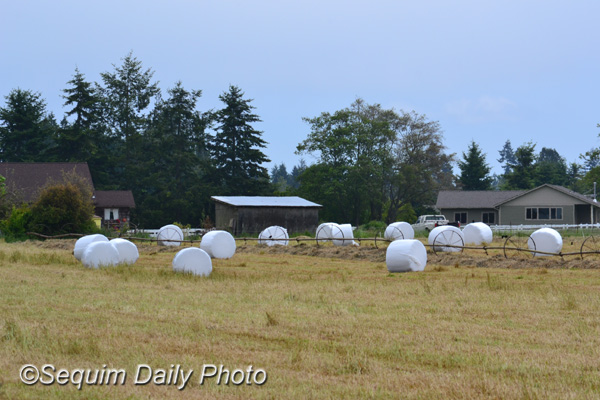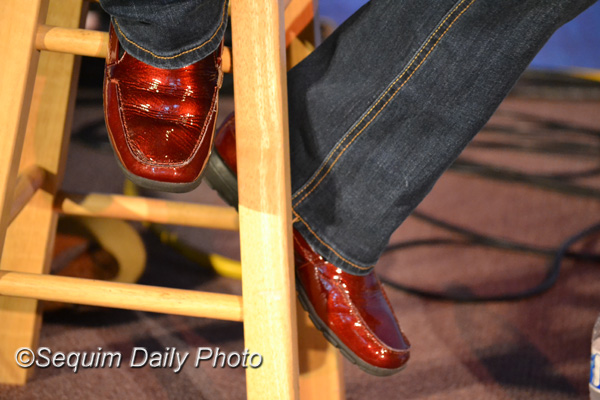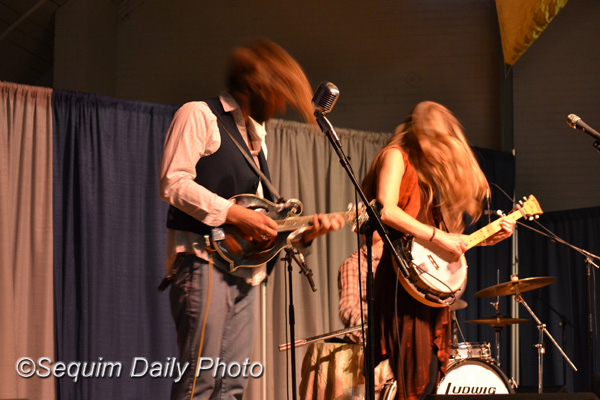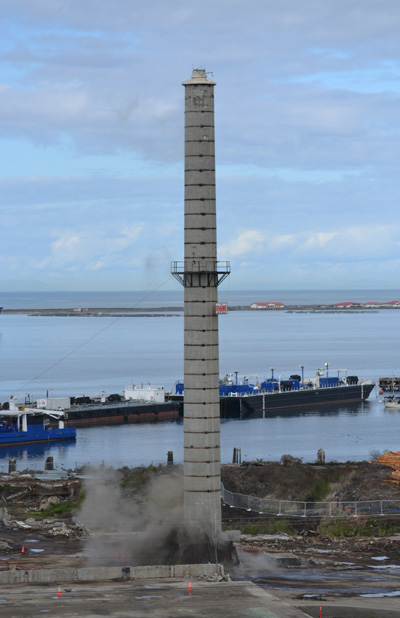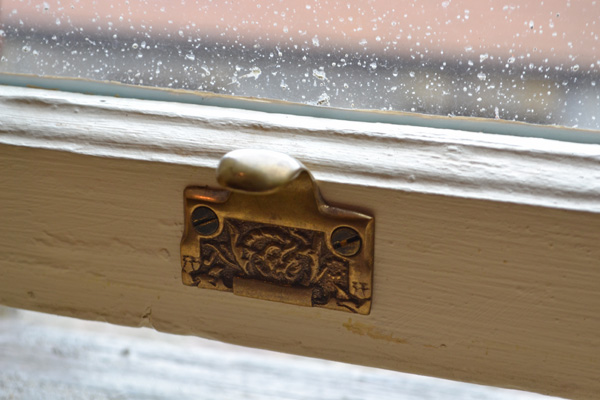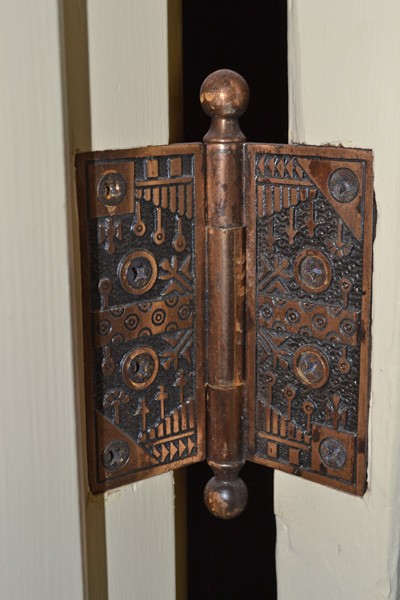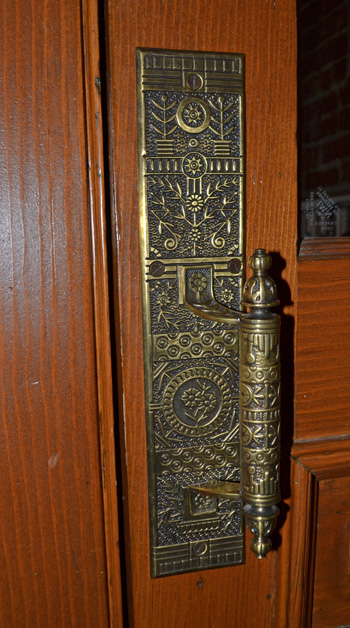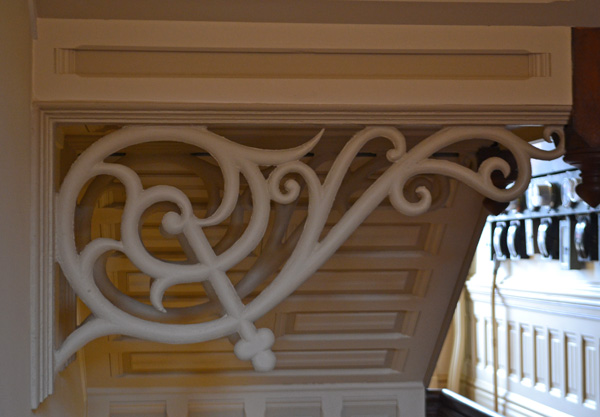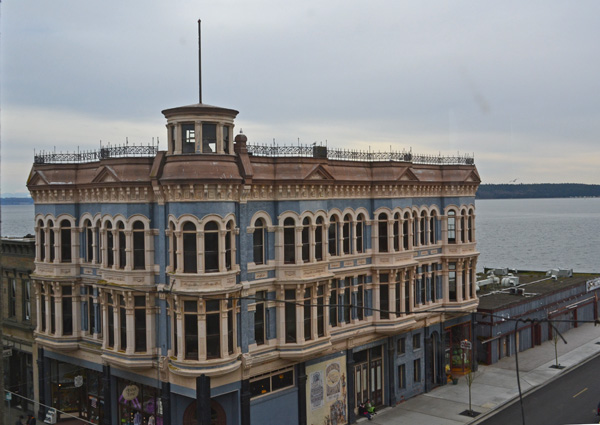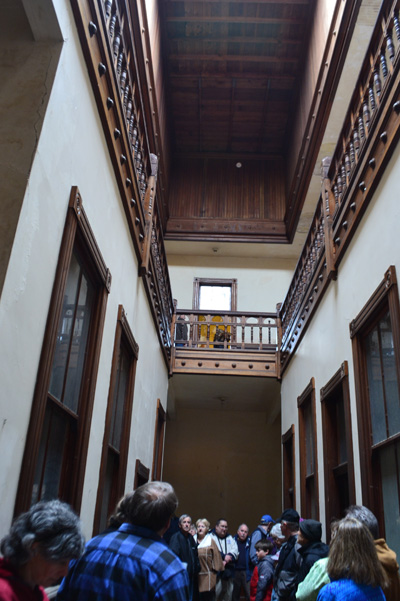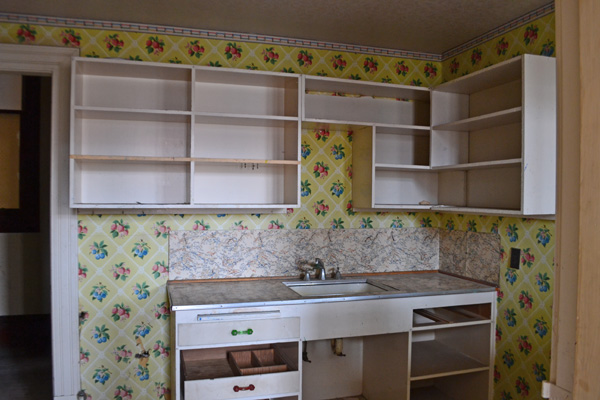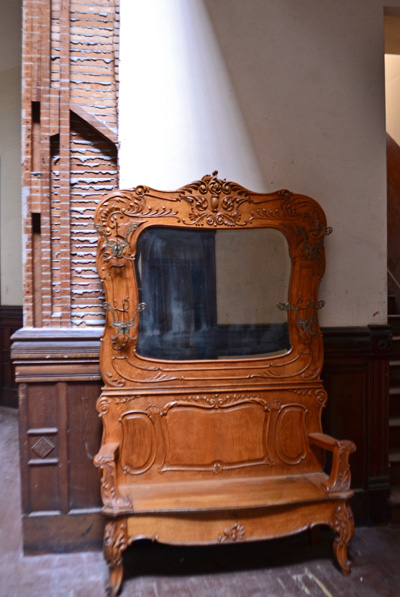It’s time to hay the fields in these parts. Sometimes it’s bundled in standard, familiar rectangles. Sometimes it’s rolled up in giant rounds with mesh on the outside. And sometimes it’s wrapped in white plastic like this. To my eye it looks like some huge aliens have come in the night and left a batch of giant marshmallows. You know, like they were interrupted before they could pull out graham crackers and Hershey bars to make ‘smores.
Category: Local Events
I want these shoes
Juan de Fuca Festival of the Arts, 2
Here are more shots from the Juan de Fuca Festival. Here’s the fiddler from The Burren Boys, left, the group that kicked off our day yesterday.
I loved the music. If you want to hear audio clips, check out the Juan de Fuca website for links that will lead you to performer music. But I also loved the visuals. This was a play of light against Anna Tivel, a gifted musician, singer and songwriter.
Here’s Anna in the flesh.
There used to be a bumper sticker that read, “Use an accordian, go to jail.” Music snobbery, now dated. This woman from The Barbary Ghosts from San Francisco rocked it with sea chanteys, ballads, and drinking songs. I was completely taken with the beautiful detail of this accordian. It wasn’t your father’s accordian, that’s for sure.
Juan de Fuca Festival of the Arts, 1
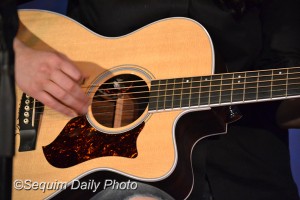
It’s Memorial Day weekend, time for the annual Juan de Fuca Festival of the Arts, four days of live music, dance, and art. It kicked off yesterday. We love that you can get front row seats if you arrive early and hear music until your ears get full. We’ve heard great local and regional groups in addition to bigger names from further afield. Four days of virtually nonstop entertainment.
The Shook Twins from Portland, a terrific act with great music.
The stubborn stack
This is a chimney stack at the former PenPly facility in Port Angeles. It was part of a plywood-making operation that went out of business after a 70-year presence on the Olympic Peninsula. Multiple generations of some families worked there. The mill was closed in late 2011 and the site was cleared. . .except for the stack. The stack met its end yesterday, but not without a fight.
Business took us to Port Angeles yesterday and afterwards we decided we’d go take a look. We got to a good vantage point an hour and a quarter early. After all, how often do you get to see a 175-foot chimney stack taken down? Turns out, for us, never so far. As the 3:30 appointed hour approached, the crowd around us grew. This was a big deal in the community and lots of people wanted to see it.
If you look at the bottom of the stack there’s a cloud of dust billowing out from 20 holes filled with explosives. As the explosives detonated, a cable pulled the stack to the left, in the direction it was intended to fall. It seemed to lean ever so slightly left but it didn’t fall. The cable either broke or released and the resilient stack returned to its locked and upright position. The dust cleared. A group of men in hard hats approached carefully, gingerly, then began to work around it with increasing resolution.
By the time we left, an hour later, it was still standing. The local paper reported yesterday evening that workers pulled out a big electrical saw and torches to sever stuborn steel rebar that insisted on doing its job of keeping the stack standing. It finally tilted and fell around 6:15, after most of us had give up and gone home.
Details, details
In the good old days I always had this phrase on my resume: “detail-oriented.” This was a good thing for an administrator, making certain nothing fell through the cracks. I’m still working on it as a photographer. After all, there are details and then there are details. The buildings on the Insider’s Historic Building Tour in Port Townsend last Sunday were all terrific. But the details were my eye candy. Like the window pull, above, in the Cracker Factory. And it wasn’t until I pulled the shot up on my computer screen that I saw the tiny bubbles and imperfections in the original glass of the window. Cool!
These door hinges from the Cracker Factory were also in the Hastings Building, albeit less buffed. In the late 1800s I’d guess that a single foundry served the region and that choices were somewhat limited. By today’s standards these would be the “very fancy, extra-nice” option, at least in my opinion.
This door pull was in a third building we visited, one that’s now called the “Mount Baker Block,” but started out its life as the “Eisenbeis Block,” the same Eisenbeis as built the Cracker Factory which I showed you a couple of days ago. The work on this is splendid.
“What’s this?” you may ask. I’m not sure if it’s decoration or function, but it is on the under side of a stairway in the Mount Baker Block. I thought it was another “don’t see much like that anymore” detail.
Details, details: I find them interesting. Pretty. And a view onto a time when there was artistry, personal effort, and a lot of pride put into the little things. It still exists today, but is shown in different ways, in a vastly different world.
The Hastings Building
The Hastings Building was included on the Port Townsend Insider’s Historic Building Tour. Since the upper floors are unoccupied and closed the tour was worth taking just to have an opportunity to look around. Built in 1889 it sports the kind of Victorian decoration and detail that you typically only see on a wedding cake these days.
The interior has a 38-foot inside court which soars to a skylight that once spanned the length of the building. It was quite a novelty in its day and its engineering didn’t keep pace with the stress of a snowload which caused a portion of it to collapse. The building had many tenants over the years, from banks and professional offices to tailors and contractors. Businesses closed during the Great Depression and we were told it was used by the U.S. Army for housing during “the war.”
The upstairs of the Hastings Building has been unoccupied for decades and seem frozen in time with period wallpaper and fixtures. The building is the only one in Port Townsend that has remained in the family of the original owners and heirs are working to restore it. There has been a lot of deferred maintenance; much work needs to be done. But as a building with promise it’s gorgeous. Just bring a fat checkbook.
This vintage piece was owned by Lucinda Hastings, the widowed matriarch who commissioned the building. A portion of the wall is exposed behind it, opened when the building structure was examined for its soundness. Steel beams were discovered running the length of the building and the construction itself was found to be very stout and stable.
